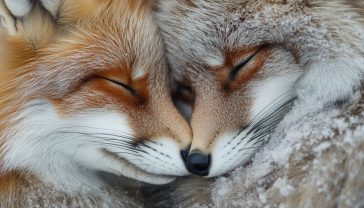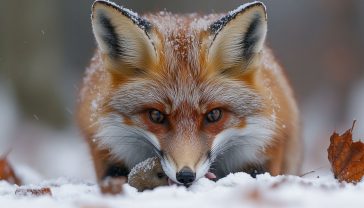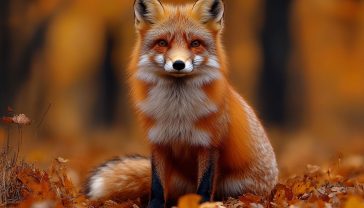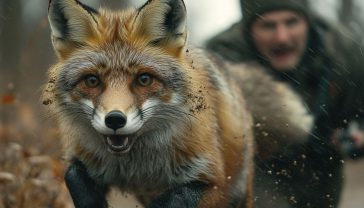What Eats Foxes? Discover Their Natural Predators
Foxes are cunning hunters, but what hunts them? Explore the natural predators of foxes and the defences these clever animals use to survive in the wild.
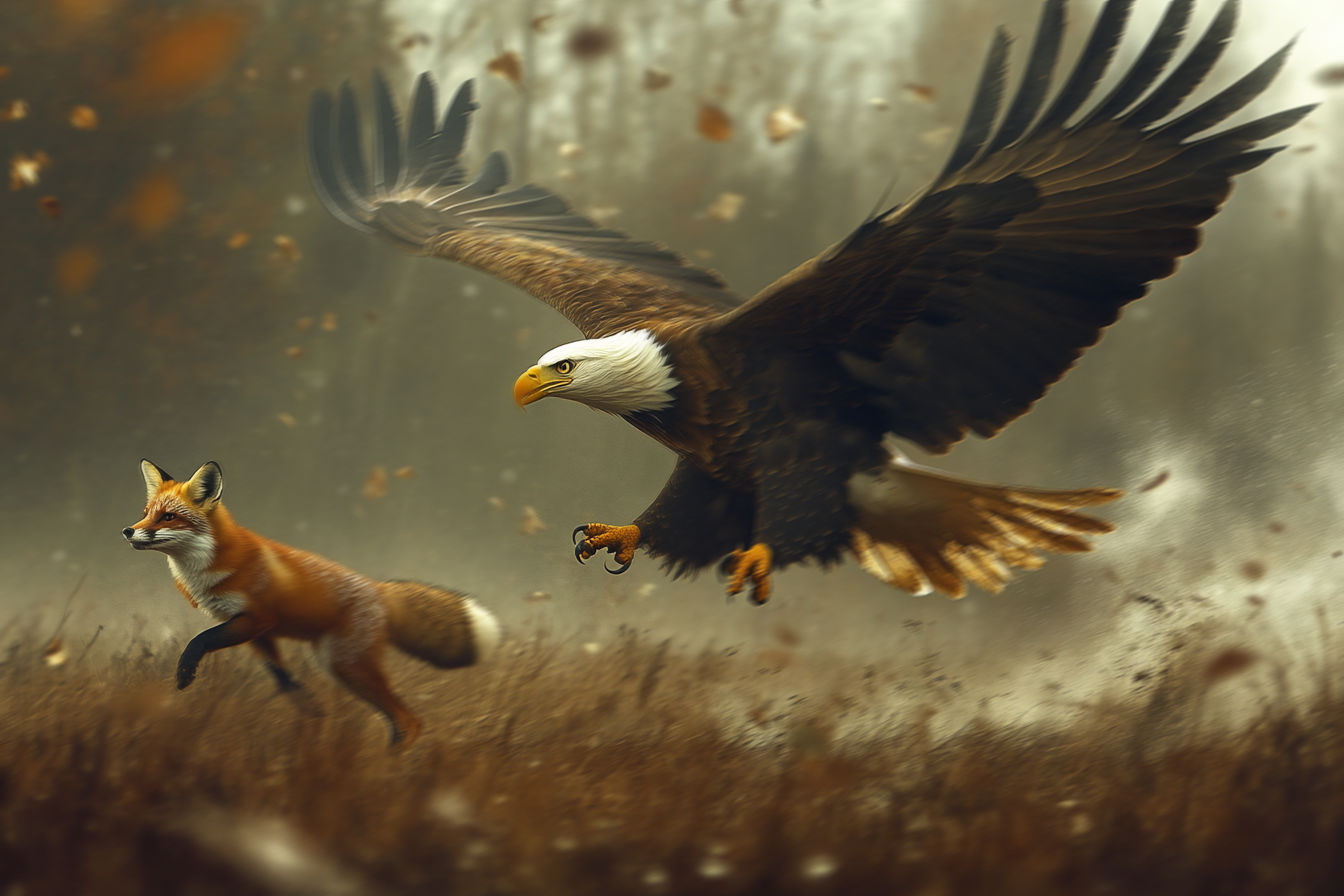
This post may contain affiliate links. If you make a purchase through these links, we may earn a commission at no additional cost to you.
Did you know that foxes, despite their cunning nature and impressive hunting skills, are not always at the top of the food chain? While foxes excel as agile predators, they must constantly stay vigilant to avoid becoming prey themselves. From dense forests to urban backyards, a variety of predators threaten foxes, influencing their behaviour, evolution, and survival.
So, what eats foxes? Let’s explore the predators that hunt them, how foxes defend themselves, and the impact of these interactions on fox populations.
Who Hunts Foxes? Predators Across Different Habitats
Foxes face a diverse array of predators depending on their environment. Whether roaming through forests, grasslands, tundras, or city streets, the threats they face vary dramatically. Let’s break down the key predators.
Wolves: The Pack Hunters of the Forest and Tundra
Wolves are among the most formidable predators of foxes, especially in forested areas and tundras. Larger, stronger, and hunting in coordinated packs, wolves can easily overpower a fox. While wolves don’t primarily target foxes, they may kill them when food is scarce or during opportunistic encounters.
Why would wolves target foxes? Sometimes, it’s as simple as eliminating competition. In harsh environments where resources are limited, every edge counts.
Coyotes: Competitive Killers in North America
In North America, coyotes pose a significant threat to red and grey foxes. Sharing similar diets—small mammals, birds, and insects—these two canids often compete for the same food sources. When competition intensifies, coyotes may kill foxes, reducing rivals or securing an easy meal.
This predator-prey dynamic highlights the fierce competition within ecosystems. How do foxes survive amid such competition? Their survival relies on agility, adaptability, and strategic avoidance.
Eagles and Raptors: Aerial Threats to Foxes
The skies aren’t always safe. Large birds of prey, including golden eagles and great horned owls, can swoop down and snatch unsuspecting foxes—particularly smaller species like the arctic fox or young kits.
Imagine the scene: a young arctic fox blending into the snow, only to have a shadow pass overhead. Before it can react, a golden eagle strikes with precision. These raptors remind us that danger comes from all directions in the wild.
Lynxes and Bobcats: Stealthy Feline Predators
Lynxes and bobcats, with their sharp claws and silent hunting techniques, are dangerous predators in forested habitats. Their ability to ambush prey makes them a particular threat to foxes that venture too close. In dense woodlands, where stealth is key, foxes must rely on keen senses and speed to escape these elusive hunters.
Bears: Opportunistic Predators
Although bears rarely hunt foxes deliberately, encounters can still be fatal. In overlapping territories, particularly in parts of North America and Eurasia, a foraging bear may kill a fox that crosses its path. These incidents, while uncommon, illustrate the unpredictable nature of wildlife interactions.
Humans: The Ultimate Predator
Perhaps the most impactful predator isn’t from the animal kingdom. Humans pose a significant threat to fox populations—through hunting for fur, controlling populations near livestock, or indirectly via habitat destruction and road collisions.
Urban foxes face the unique risk of vehicle accidents, while rural foxes may be hunted to protect poultry or livestock. Human influence, both direct and indirect, has shaped fox behaviour and population dynamics across the globe.
How Do Foxes Defend Themselves? Clever Survival Strategies
Faced with such a diverse list of predators, how do foxes manage to survive? Their success lies in a combination of physical adaptations and behavioural strategies.
Speed and Agility: Outrunning Danger
Foxes are built for quick getaways. Capable of reaching speeds of up to 30 miles per hour (48 kilometres per hour), they rely on agility and sharp reflexes to evade predators. Their ability to zigzag while running makes it difficult for larger predators to catch them.
Could you outrun a fox? Probably not—these agile creatures are designed for escape.
Camouflage: Blending into the Environment
Foxes possess fur that adapts to their surroundings, providing essential camouflage. The red fox’s rusty coat blends seamlessly with forest floors and open fields, while the arctic fox’s white fur offers perfect concealment against snowy backdrops. This natural disguise helps foxes avoid detection from predators like wolves and eagles.
Burrows and Dens: Safe Havens Underground
When danger looms, foxes retreat to their dens—secure, underground shelters that provide protection, especially during breeding season. Dens offer safety from predators unable to dig or navigate tight spaces, serving as crucial sanctuaries for both adult foxes and their vulnerable kits.
Nocturnal Habits: Hunting Under the Cover of Darkness
By operating primarily at night, foxes reduce encounters with diurnal predators. This nocturnal behaviour helps them avoid threats such as eagles and human activity, giving them a strategic advantage. The quiet cover of night provides foxes the perfect opportunity to hunt and explore with minimal risk.
The Role of Predators in Fox Population Dynamics
Predators aren’t just threats; they play a vital role in shaping fox populations and behaviours. How exactly does predation influence these cunning creatures?
Population Control: Nature’s Balancing Act
Predators help maintain balanced fox populations by preventing overpopulation. In regions where wolves and coyotes thrive, fox numbers tend to be lower, reducing resource competition and ensuring ecological harmony.
What happens when predators disappear? The balance tips—sometimes with unintended consequences.
Adaptation and Evolution: Driven by Danger
Constant predation pressures have driven foxes to evolve. Over generations, foxes have become more intelligent, adaptable, and stealthy. These evolutionary adaptations enable foxes to survive across diverse environments, from icy tundras to bustling urban centres.
Human Influence: Altering Natural Dynamics
In many areas, human activity has reduced predator populations. Without natural checks, fox populations can surge, leading to increased competition and, at times, conflicts with human communities. For example, in parts of Europe and North America where wolves have been driven out, fox populations have expanded, altering local ecosystems.
Conclusion: The Delicate Dance of Predator and Prey
Foxes occupy a fascinating niche in the food chain—both skilled hunters and vulnerable prey. From wolves in the forests to eagles in the skies, a range of predators influences their behaviour, evolution, and survival. Through speed, camouflage, and clever behaviours, foxes have developed remarkable strategies to navigate these threats.
Ultimately, the predators that hunt foxes play an essential role in maintaining ecological balance. By understanding these relationships, we gain a deeper appreciation for the complexity of ecosystems and the delicate dance of predator and prey that defines the natural world.
Next time you spot a fox darting through the underbrush, remember: it’s not just a cunning hunter—it’s a survivor.

